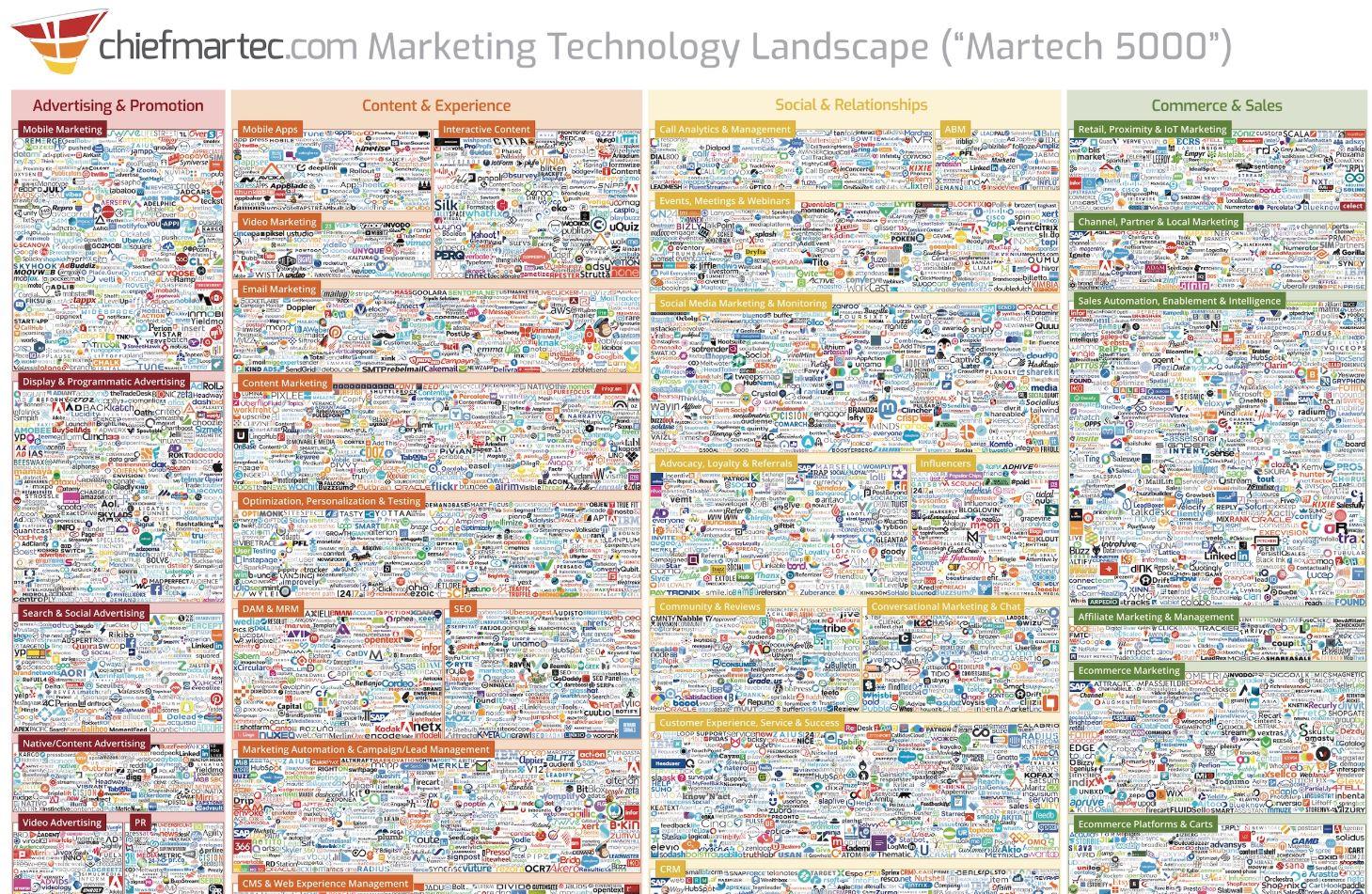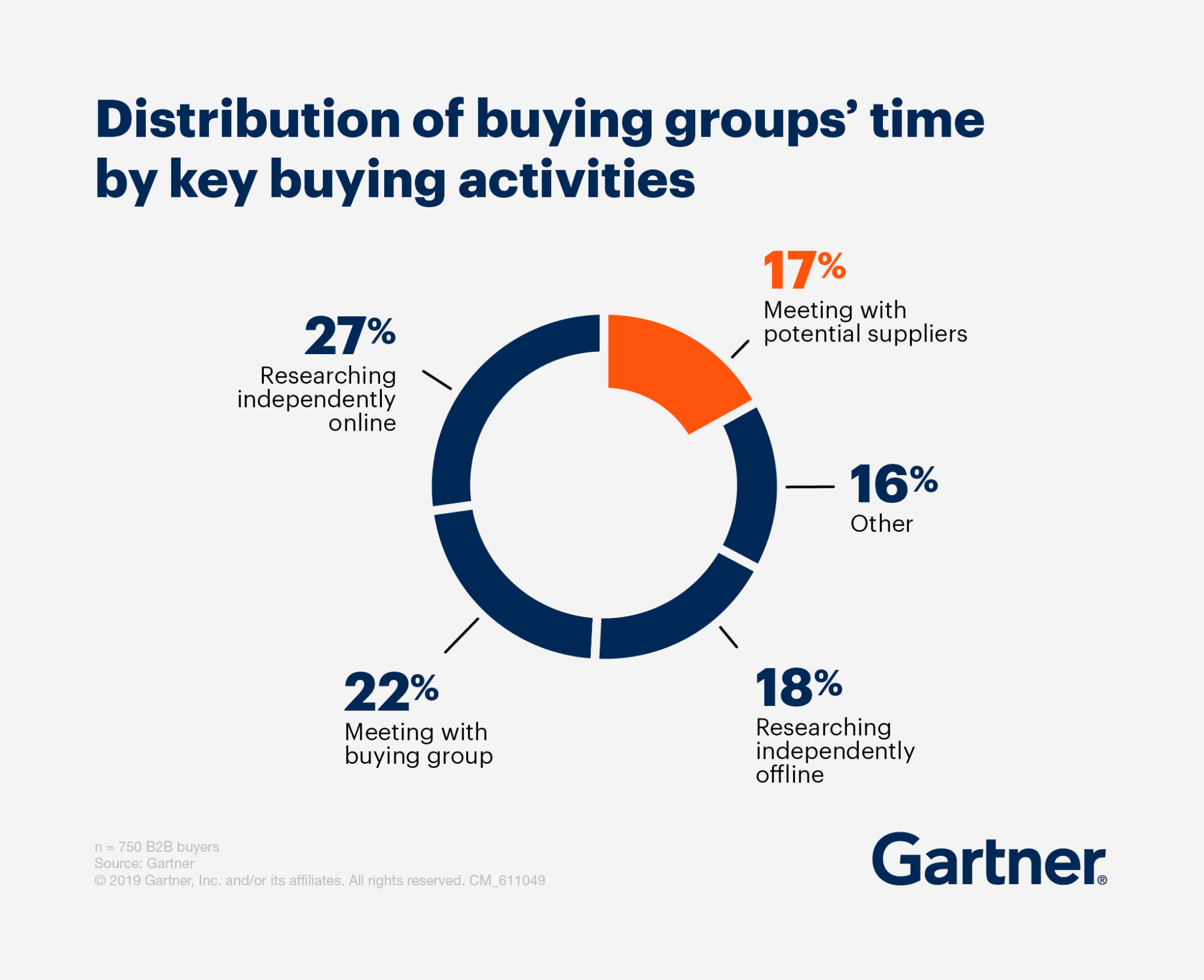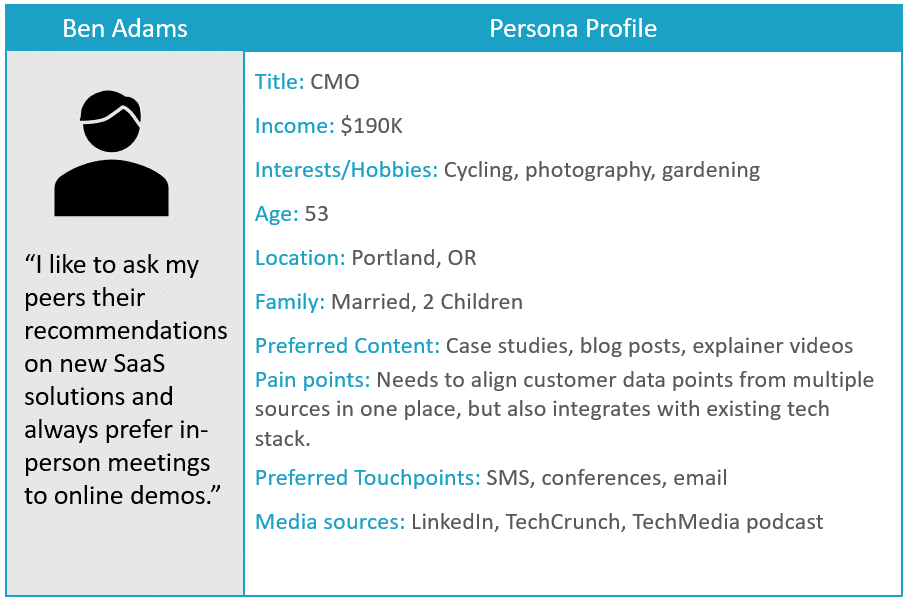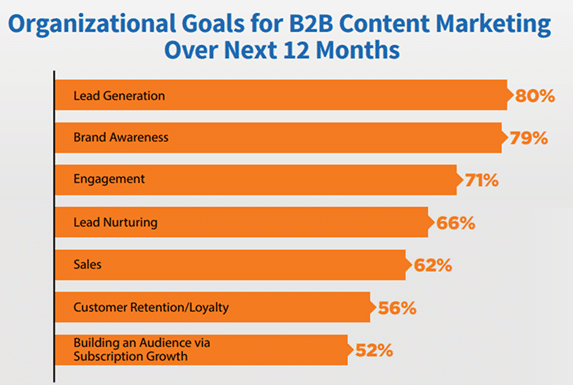How to Build an Effective SaaS Content Strategy in 2020

If you’re an SaaS business targeting other businesses, then you already know you’re in a crowded marketplace. The martech landscape is approaching more than 10,000 solutions, as per last year’s Marketing Technology Landscape assessment by Scott Brinker of Chiefmartec.com.

Sample of Chiefmartec.com’s Martech Landscape
The full landscape, as of March 2019, comprised over 7000 companies in a variety of technology categories ranging from Advertising & Technology to Data and Management. The newest landscape hasn’t been released yet, but it will undoubtedly include even more SaaS tools and solutions.
Over the coming year or two, it’s highly likely that SaaS companies will experience a shakeout, with various players merging, others going away completely, and still others joining the space with new services and offerings. Regardless of how the chessboard shifts, the clutter and crowding in this space will continue to be an issue for marketers who are trying to grab the fragmented attention of B2B buyers.
“Gartner reports that the average buying group spends 15% of their time in the buying cycle reconciling and prioritizing conflicting information.”
That’s why it’s so important for SaaS companies to create a comprehensive content strategy that incorporates an understanding of how modern B2B buyers search for new tools and vendors, one that leverages multiple touchpoints and channels to reach buyers at every point in the funnel.
Buyer confidence drives account growth
A new study by Gartner found that the strongest driver of account growth is customers’ confidence in their own decision making. Investing in a new SaaS platform or service costs more than money—it takes time, staff, and internal resources to ensure that the technology integrates with a company’s existing infrastructure or, if that’s not possible, that infrastructure and staff skills can be upgraded to best leverage new tools.
Per Gartner, “Customer decision confidence drives 2.6 times the likelihood of a high-quality account growth purchase.” Gartner defines confidence as a customer’s ability to feel secure in anticipating necessary changes, determine the right questions to ask, and make the right choice.
Content is the foundation of helping B2B buyers feel confident, but too much content tends to slow down the decision-making process. That’s because a large amount of much high-quality content is available to B2B buyers across a wide spectrum of SaaS services. While most B2B content is reliable, trustworthy, and readily accessible, much of it can be conflicting, adding to a buying group’s time when considering a new solution. Gartner reports that the average buying group spends 15% of their time in the buying cycle reconciling and prioritizing conflicting information.
The three-part content strategy
For SaaS companies, creating a content strategy is key to ensuring the content they create is valuable and serves a specified end goal—namely, reaching new prospects and fueling account growth. To this end, it can help to link content creation to specific stages of the buying funnel as follows:
Awareness: The goal of awareness-focused content is to attract the right audience with educational content that positions you as the go-to resource in your industry or niche. Content in this category includes:
- Q&As,
- blog posts,
- videos,
- infographics,
- podcasts
- tip sheets
Interest: Once prospects are further along the funnel, the content they consume will be different. Interest-focused content aims to turn prospects into leads by providing a specific and unique solution for common needs and challenges. Content in this category includes
- how-to advice,
- training videos,
- assessments,
- solution videos,
- frameworks,
- worksheets,
- perspectives solution pages,
- presentations,
- sell-in solutions decks
Consideration/Purchase: The aim of this content is to build brand preference by showcasing your success and brand value. Content in this category includes:
- case studies,
- testimonials,
- show and tell,
- buying/product guides,
- evaluation tools,
- product webinars,
- data sheets,
- free trials,
- comparisons
B2B buyers find new vendors via variety of online and offline channels, with many mid-to-enterprise-sized companies forming buying groups involving six to ten decision makers. According to Gartner, the buying group’s time is split into six key buying activities as follows:
- Researching independently online (27%)
- Meeting with buying group (22%)
- Researching independently offline (18%)
- Meeting with potential suppliers (17%)
- Other (16%)

Source: Gartner
The B2B buying journey incorporates a variety of different sources of information, but the process of discovering this information isn’t linear. During the decision-making process, B2B buyers use the following resources to help them select a supplier, often circling back multiple times to revisit the research:
- Web search
- White paper
- Vendor website
- Peer discussions/reviews
- Social media (e.g., LinkedIn)
- Case studies
- Online/virtual demos
- Industry events/conferences
- Sales reps
Content is needed to support buyer research across all touchpoints of the above touch points. Thus, a content strategy can be a powerful tool because it ensures that content is aligned across all channels while helping marketing, sales, development, product, and brand teams remain on the same page in terms of messaging. At the heart of your content strategy lies the buyer persona.
Creating a B2B Buyer persona
A buyer persona is a fictional representation of your ideal customer or customers. Many businesses can benefit from creating several personas based on the types of customers they’re targeting as well as the variety of features and services that their product supports.
Ideally, you’ll create your persona by using feedback from sales and marketing teams (at the very least), though it can be extremely helpful to get companywide feedback beyond these two teams.
An example of some elements to include when creating your persona are: job title, income, interest/hobbies, age, location, family, preferred content, pain points, preferred touchpoints, and media sources.

Example of a generic persona for a CMO in need of a Martech solution
Mapping out a persona provides a framework not only for the type of content you’ll create, but where this content should appear and what format it should be in (e.g., a video posted to LinkedIn).
Content planning and scheduling
Once you’ve created your target persona and mapped out the type of content you need, you’ll need to put a process in place that considers who will create each piece of content, when it’s due, and where it will appear. This process doesn’t need to be complex. A few free or low-cost tools are often enough for most small to mid-sized businesses, though enterprise-sized businesses can benefit from a more robust content planning tool. In either case, there are three parts to the content production process you should keep in mind.
The content itself: Planning out the actual content pieces in three month blocks of time is a great way to ensure you always have content in production and new pieces to share. Put someone in charge of the entire process, but get content ideas and pitches from a variety of team members and make sure you come up with several different types of content (e.g., videos, whitepapers, blog posts, and infographics).
The editorial calendar: The editorial calendar is a visual calendar that enables you to visualize when each piece of content is due. We use a spreadsheet template to plan out content pieces and color code them based on their purpose and content type.
Content workflow tracking: Workflow tracking is important to ensure that content moves through the production process without getting stuck. Trello is a great tool for workflow tracking, because it enables you to create a board for each stage of the content creation process: assigned pieces,
Content amplification
Sharing content once it’s created is nearly as important as the content itself. After all, what use is writing content that no one sees or engages with. Over 70% of B2B companies say that the focus of their content marketing efforts is generating engagement. Lead generation and brand awareness are the only two goals that exceed this one, per the following chart from SocialMediaToday.com.

Source: Social Media Today
B2B marketers must be strategic about amplifying content, since it’s not generally appropriate to share B2B content widely in B2C spaces (e.g., your personal Facebook page). The most obvious places to share and amplify your content are:
LinkedIn: LinkedIn is the largest professional social media network in the world, with over 675 million active professionals using the platform (as of December 2017), 4 out 5 of whom drive business decisions. LinkedIn enables businesses to create a free brand or company page where content can be posted, promoted, and shared. LinkedIn’s ads platform also supports sponsored content, meaning you can amplify organic posts into users’ native feeds and target this content to the most appropriate professional demographics.
Using your blog: The content you create won’t necessarily originate from your blog, but you can use your blog to amplify just about any content you have available, from explainer or demo videos to whitepapers to news and events. Creating a short blog post that promotes longer form content like whitepapers or webinars is a great way to repurpose existing content while creating new content for your website.
Social media platforms: We tend to think of social media platforms like Instagram and Facebook as being more appropriate for B2C marketers, but most of these platforms support creating a business profile that allows you to share content. For example, 90% of Instagram accounts follow a business on the platform. B2B buyers already use these platforms personally, thus ensuring you share content here is a good way to make it more discoverable (and shareable).
Putting it all together
Creating a B2B content strategy for SaaS takes planning and foresight, but it’s well worth the time and effort involved. Creating your target persona, mapping out your content pieces, scheduling each piece of content and incorporating content amplification into the process will ensure your content is seen and shared. It can also improve your search engine rankings (since fresh content is a factor in search ranking algorithms) and help buyers feel confident that your company is on top of the latest trends and developments in your industry.
As with any marketing initiative, it’s important to track and monitor the performance of each piece of content you create so that you can refine your strategy, as appropriate. Defining clear metrics to track and goals to achieve is an important part of this process. This enables you to periodically review your content strategy and refine it as necessary.
***
Contact us to learn more about creating a comprehensive B2B content strategy. We’re happy to provide a free 30-minute consultation.
Share this
You May Also Like
These Related Stories

How to Grow Your SaaS Business in 2020 (Hint, Align Marketing and Sales)

Four Tactical Approaches to Help Sales & Marketing Collaborate on SaaS Business Growth
